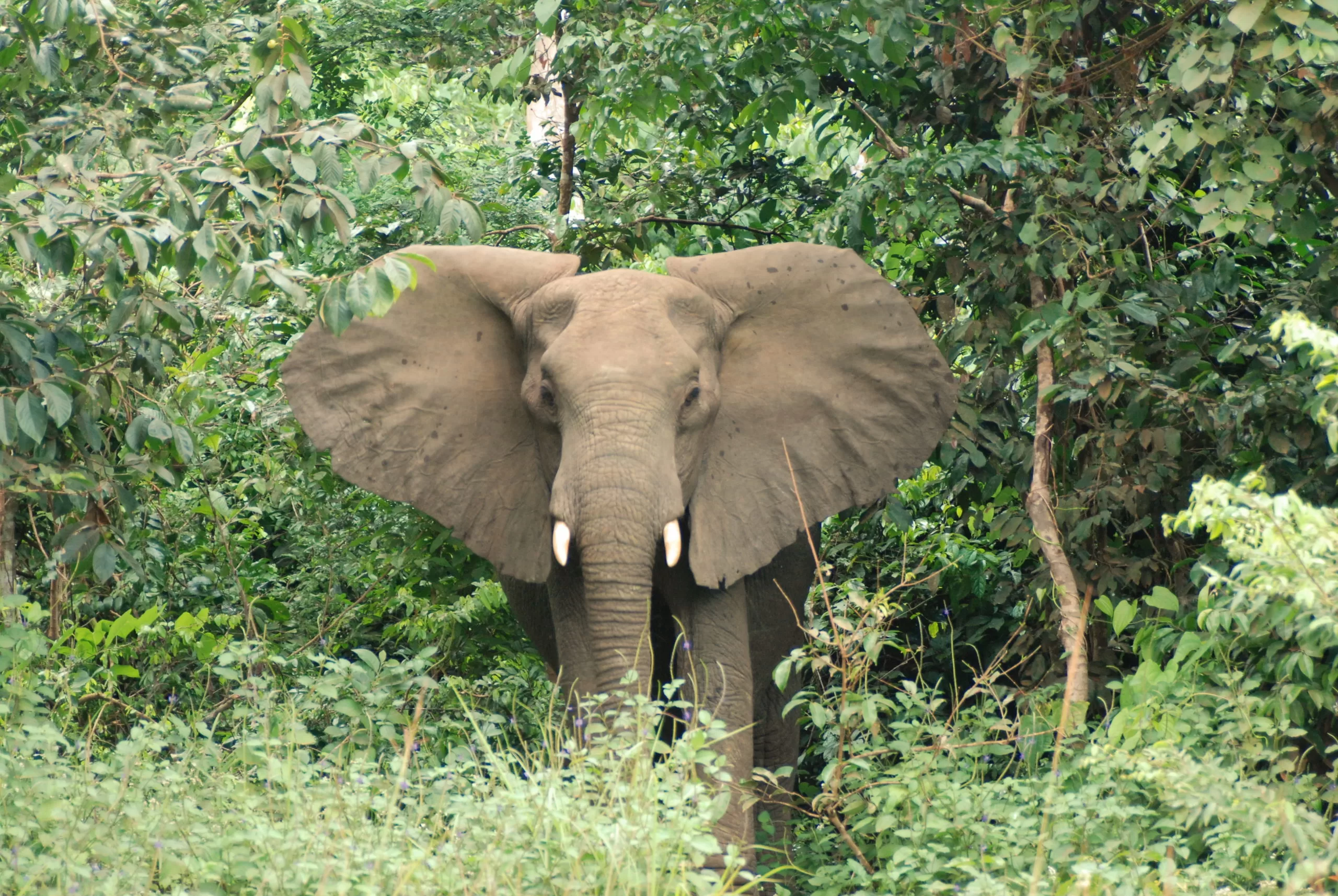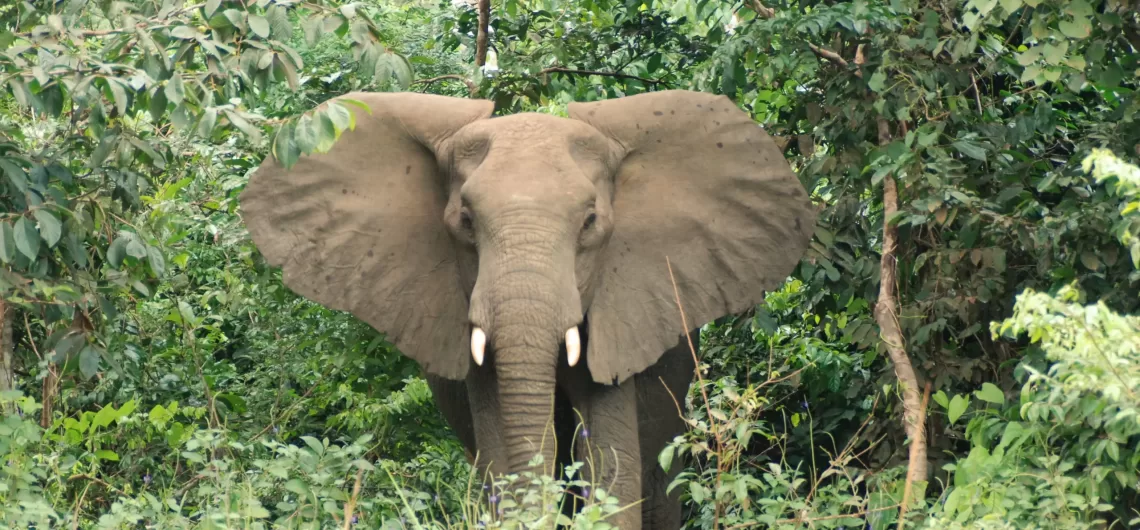Shiba Hills National Park
THE PARADISE OF THE SABLE ANTELOPE
In 1903, the government gazetted the Shimba Hills as a National Forest. In 1924, they incorporated grassland areas into the forest. And they made several subsequent extensions to bring the Reserve to its present size. 1968, the government double gazetted the majority of the Reserve as the Shimba Hills National Reserve. Two smaller areas to the west, which adjoin the reserve and are almost entirely forested. Remain as Forest Reserves: Mkongani North and Mkongani West Forest Reserve.

The Shimba hills are a dissected plateau that ascends steeply from the coastal plains. 30 km south west of Mombasa and just south of Kwale town. The surrounding escarpment rises from around 120m to 300m across the bulk ofthe plateau and as high as 450m at Marere and Pengo hills.
All hills have views points, which offer splendid views of the hilly and forested countryside and faras the Indian Ocean and Chale lsland to the East and the Tsavo plains and Taita hills to the West.
What t0 See
Sable Antelopes
This very small park is also the sanctuary of the last breeding herd of indigenous sable antelope (Hippotragus niger roosevelt) in Kenya. People often consider this typical saber-horned antelope as the most beautiful of the large antelopes. You can spot them more easily on the central grasslands (Buffalo ridge) and around the old airstrip (near Longo forest).
Best time is early morning or late afternoon. Large and gregarious animals with long scimitar-shaped horns, they have a black colour coat marked with white stripes on their face and under-parts. ln the past, this African savanna antelopes were preys of many hunters and the species was almost extinct in Kenya.
A Unique Habitat For Elephants
The tropical forests of Shimba Hills National Park are a unique habitat for elephants of the Kenyan coast. The best place to spot them is in the Elephant lookout (Giriama Point) or along the forested area such as Longo forest, but herds can be seen all over the park as there is more than 600 elephants in the area. Note also that a fenced elephant corridor connects the Shimba Hills National Park to the Mwaluganje Forest and its elephant sanctuary
Wildlife ln The Park
Because vegetation cover is dense and the weather is very hot during the peak hours, animals rest in shades most of the day in the forest and may be hard to see. A visit very early in the morning and late afternoon is recommended.
Sheldrick Falls
To ensure safety, it is advisable to walk along the 2 km long way-marked footpath to the falls accompanied by a K.W.S. ranger. This is because there are occasional sightings of elephants or a few buffalos in the area. Remember to bring a hat and drinking water, as the path traverses steep uncovered grass plains and the weather can get very hot. David Sheldrick (1919-1977) discovered the falls.
It is a two hours pleasant walk from the parking area to this spectacular falls, which supply Tiwi and Diani with water. The track leading down to the cascade offers a scenic walk, count 45 minutes to descend and 1 hour to return. At the fall, don’t try to climb on the cliff as it is slippery but take a cold shower of25 meters high, swim safely in the cool water pool or even have a picnic by the cascades on sand.
The level ofthe pool depends ofthe season: during rain season, you can easily swim in the pool and there is one fall; during dry season, the pool is tiny and there are two spring waterfalls.
Ocean View Point & Giriama Point & other viewpoints
There are many viewpoints in Shimba Hills, all with views over the forested hills and the grass plains. These viewpoints are used to observe elephants so binoculars are a must. The eastern side of the park has more viewpoints than the western side and the scenery is more contrasted with forests and plains.
At the western side of the park, the Pengo hill (450 m) is the highest point of Shimba hills and on a very clear day, the Tsavo plains and the Taita Hills can be seen (and perhaps the Mount Kilimanjaro).
Ocean viewpoint offers a panoramic view over the hilly countryside and as faras the Kenyan coast and the (hale Island and there is a picnic site. The Giriama point is on the way towards Sheldrick Falls,
Mwaluganje Forest (Elephant Sanctuary)
Located at approximately14 km from the main gate of Shimba Hills N.P., the Elephant sanctuary is linked with the National park by a fenced elephant corridor, so there are chances to see elephants crossing the main red-soil road.
The forest is also home for endemic bird species and indigenous trees species such as Mbambakofi (Afzelia quanzensis), Mvule (Milicia excelsa) and Mgurure (Combretum schumanii) and six species of cycad, a fan-like plant that evolved 300 million years ago (Eucephalartos hildebrantii).
Visiting the park is a great opportunity to discover the dry red-soil of inland Kenya by doing a real safari and observing African elephants while being near the coast and still enjoying the freshness of the coastal breeze.
Where to Stay
Lodges
Aberdare Safari Hotels,
Tel: +254 (20) 5540780, 5535412.
Sel-catering Accommodation
Sable Bandas; Located 2 km from the Main Gate the Bandas have four units with a capacity of two, with a fully furnished kitchen. Reservations are made through the warden or KWS HQ, Nairobi.
CAMPING
2 public campsites: Professional (capacity 100), Makadara (capacity 50), 2 picnic sites Ocean view (capacity 50), Sheldrick Falls Walk (Capacity 50).
Best time to visit: All year round.
What to Take With You
Drinking water, picnic items and camping equipment if you intend to stay overnight.
Also useful are: binoculars, camera, hat, sunscreen and guidebooks
PLEASE RESPECT THE WILDLIFE CODE
- Respect the privacy ofthe wildlife, this is their habitat.
- Beware ofthe animals, they are wild and can be unpredictable.
- Don‘t crowd the animals or make sudden noises or movements.
- Don‘t feed the animals, it upsets their diet and leads to human dependence.
- Keep quiet, noise disturbs the wildlife and may antagonize your fellow visitors.
- Stay in your vehicle at all times, except at designated picnic or walking areas.
- Keep below the maximum speed limit (40 kph/25 mph).
- Never drive off-road, this severely damages the habitat.
- When viewing wildlife keep to a minimum distance of 20 meters and pull to the side of the road so as to allow others to pass.
- Leave no litter and never leave fires unattended or discard burning objects.
- Respect the cultural heritage of Kenya, never take pictures of the local people or their habitat without asking their permission, respect the cultural traditions of Kenya and always dress with decorum.
- Stay over or leave before dusk, visitors must vacate the Park between 7.00pm – 6.00am unless they are camping overnight. Night game driving is not allowed.
HOW T0 GET THERE
Roads:
From Mombasa, take the ferry at Likoni to access the southern coastline where Diani and Tiwi beaches are. Then, take the main A14 coast road l0 km southwards until you join the main crossroad. Take the road climbing to Kwale Town ((106). The main gate is located at 1 km from the C106 road and 3 km from Kwale. Park Gates: Main gate, Kivumoni Gate, Kidongo Gate and Shimba Gate.
Airstrips:
The reserve has one airstrip located near park headquarters.
Open:
Daily 6.00am – 6.00pm. Note: No entry is allowed on foot, and visitors will not be allowed into the Park after 6.15pm.
Current entry charges:
Obtainable via KWS HQ: Tel: +2S4(20)6000800, 6002345 – Fax: +254(20)6007024
Email: marketing@kws.go.ke – website: www.kws.go.ke
‘Safari Card‘ required?
At present the park does not operate the Safari Card system. Entry is by cash only.
The Warden:
Shimba Hills National Park, P.0. Box 30, Kwale – Kenya.
Tel: +254(040)2l04259/2041866, Cell: +254(722)397460, (727)034714, (70l)573054
